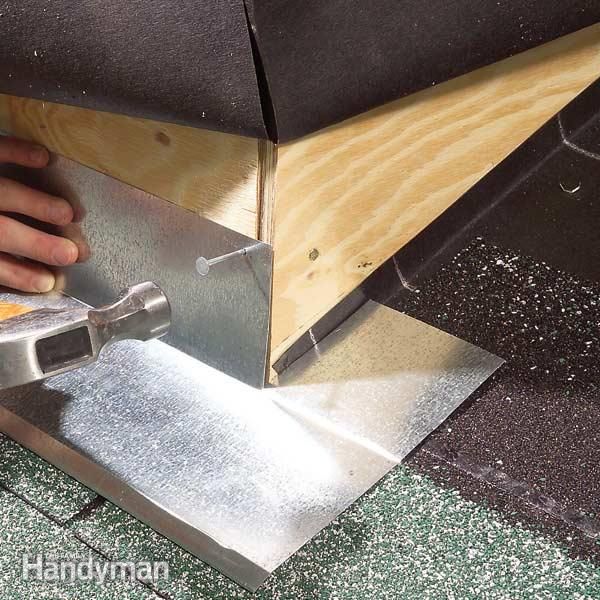Purpose Of Kick Out Flashing At Roofs

The solution is kickout flashing which replaces the bottommost piece of step flashing and directs water away from the wall and into the gutter.
Purpose of kick out flashing at roofs. A drip edge performs a similar purpose. Kick out flashing this angled piece is typically used in conjunction with step flashing at the bottom edge of the roof. Step flashing protects the gap where roofs meet walls by weaving into the roof shingles. Step and kickout flashing should be installed at all roof wall intersections to protect the wall and divert rainwater runoff into a gutter.
Omitting kickout flashing often leads to major damage behind the exterior cladding. This angled piece of flashing kicks out the water runoff directly into the gutter and away from the adjacent wall to prevent mold and wood rot. At the bottom of the roof water needs to be directed away from the wall or you ll get a cascade of moss mold and rot. It is installed at the bottom of a roof and wall intersection with the lowermost portion formed to deflect water away from the wall.
Flashing is installed to surround roof features such as vents chimneys and skylights. If not directed away water can pour into walls behind the siding cut that points up the roof rake. Whenever a roof surface abuts a vertical wall surface moisture intrusion and rot become a risk at the connection between the two planes. Our kickout flashing diverts the water at the roof eave away from the wall and into the gutter protecting your reputation and avoiding expensive future repairs.
Install step and kick out flashing at all roof wall intersections to protect walls from water intrusion and install boot or collar flashing at all roof penetrations to protect roofs from leaks. Roof flashing is a thin material usually galvanized steel that professional roofers use to direct water away from critical areas of the roof wherever the roof plane meets a vertical surface like a wall or a dormer. It helps redirect water runoff directly into the gutter. Kickout flashing also known as diverter flashing is a special type of flashing that diverts rainwater away from the cladding and into the gutter.
The flashing piece is less than a foot square piece of metal or plastic. Valley flashing is to protect the valley where two roof planes intersect rather like channel flashing. When installed properly they provide excellent protection against the penetration of water into the building envelope. Another design for roof edges is called kick out flashing.
Kick out flashing a somewhat forgotten practice except by the best roofers addresses this risk at the most vulnerable intersection between sloped roofs and walls.














































